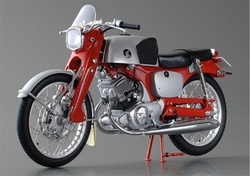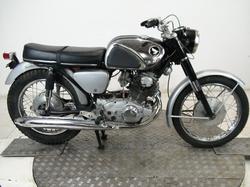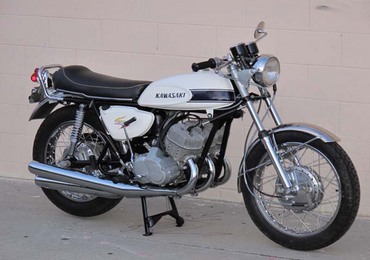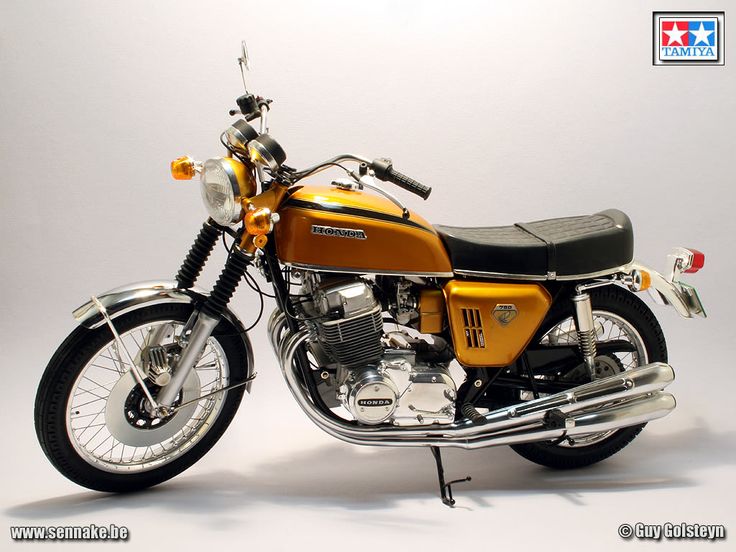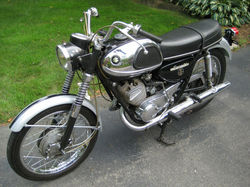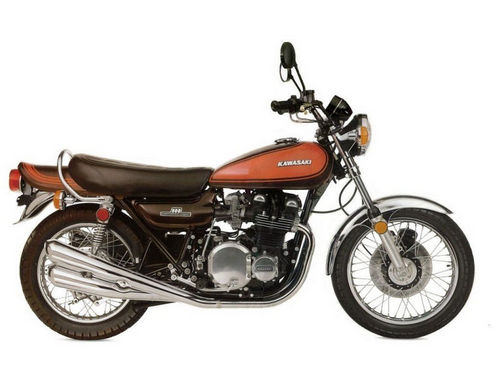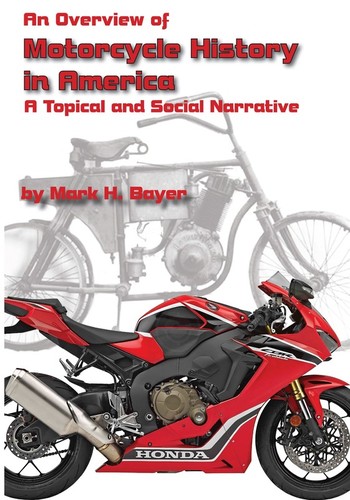Japanese Motorcycle Innovations:
Japanese manufacturers have been and continue to be great at making great advances in technology:
Prior to World War II, Japanese manufacturers primarily copied British and German motorcycle builders. The Ruiko was a Japanese verson of a 1930's Harley Davidson built by contract. It was not till after the great war that Japan started to generate their own designs. At first they copied the best of British/European motorcycles, primarily NSU, BSA, and a few other makes. The first motorcycles and scooters were sold in japan but by 1959 and 60, they were looking for export opportunities. The US was a great candidate because of our wealth and size. By the early 1960's Japanese makers were beginning to show their engineering prowess. Much of Japanese innovation was not the "first" of a design, but the advanced development and general marketing of modern technology. Unlike European and American companies, Japan spent much more on better, more advanced equipment to build their products, but also spent much more time on research and development. By 1962 Honda's R & D department was at least six times larger than that of America's largest motorcycle manufacturer. As stated before, Japanese companies were typically not the first to do something, but took high tech engineering and made it better and standard on production bikes. Below are some of the major innovations of Japanese companies.
Above is a 1959 Honda CB92:
The Honda CB92 (125cc) above and the CB72/77 (250/305cc) below it were both super sports motorcycles which put Honda on the map. Both bikes were high performance machines for the day which outperformed most motorcycles larger than their perspective sizes. The CB92 was good for 80 mph while it's larger brothers was good for 95 and 100 depending on which size was being ridden. The Super Hawk was faster than many British 500's and a few 650's. Beyond performance figures, the bikes were very reliable, could be reved all day long, and lasted a long time. Both are very collectable today.
The 1968 Kawasaki H 1 (500cc three) was a powerhouse of the day:
When the Kawasaki H 1 500cc 2 stroke tripple came on the scene in 1968, it quickly became the performance king. Tested from just over 13 seconds through the quarter mile at just over 100 mph, there was no other stock bike that could touch it. Even the HD Sportster which was a performance bike back then was quickly humbled even though almost twice it's size. The first H 1 was rated at 60 hp. The new 2015 H 2 is rated at 300 hp for the track model. Those getting the street version must suffer with only 225 hp. How sad.
Below is the 1969 Honda CB 750 which was called the motorcycle of the century:
The mighty CB750 was a world changer. Though slightly slower that the Kawasaki on the drag strip, it was a smooth, comfortable, and better handling bike which was a very usable daily machine. The Honda has been called the first "super bike," the "bike of the century," and the first truly modern motorcycle. The 750 was refined, was very reliable, was a great touring bike, and cost less money than the big British bikes. Many CB750's are still used today and if taken care of will almost last forever. I am aware of a few which have never been overhauled and are still used. Truly a world changing machine.
Below, the 1967 Suzuki X-6 Hustler:
The Suzuki X-6 Hustler was a very fast 250cc 2-stroke twin. With a 6 speed transmission and claimed 29 hp, the bike could run with British 650's. Fast but not a good touring bike. An example of an early Japanese bike which was a pace setter.
A Few Japanese Innovations:
1. The first Japanese motorcycles which were imported into the US were small discplacement, fun, inexpensive, easily maintained, and very reliable machines compared to the typical American motorcycle. Because of these qualities, a new sport was created. Many young people began riding and every year or so, would move up to the next size. From 50's, to 90's, to 160's, to 250/350's, then to larger motorcycles. US motorcycle sales were under 50,000 unites in the early 1960's. By the end of the 1960's, sales were over a million a year most of which were japanese bikes. This is called the "Japanese Motorcycle Invasion."
2. The 1959 (to 1962)Honda CB92 Sport Benley was a high RPM, 125cc sport bike which would outperform many British 350cc machines. It was also clean, didn't drip oil, and was very hard to break. This motorcycle was an introduction to the Japanese motorcycle in the US. These bikes now fetch over $10,000 if in good condition.
3. The 1967 Suzuki X-6 was the first common street motorcycle which used a 6 speed transmission. They were inexpensive, fast, fun to ride, and cost around $650 new. They are also very collectable!
4. The Japanese racing 2-strokes were putting our huge amounts of horse power. The Kawasaki and Yamaha racing 125's could produce up to 40 hp and the 250's as much as 70. These were huge figures backi in that time period. Japanese companies owned the track after the mid 1960's. Even today, the japanese racing engines produce superior numbers. The Honda 990cc YCV211 can produce over 300 un-supercharged reliable hp.
5. The 1968 Yamaha DT 1 dirt bike revolutionized off road machines. Certainlly they existed before, but the Yamaha was a very competitive and well built machine priced at 30/40% less that those bikes available at the time.
6. The 1969 Honda CB750 was the first truly modern motorcycle produced in large numbers. With a 5 speed transmission, in line four, front disc brake, and as large as the British 650/750 twins/triples, the Honda was way ahead of the competition. Until 1972 when the Kawasaki Z 1 was introduced, the CB750 was king.
7. The 1972 Kawasaki Z 1 shown above was a huge step beyond the CB750. Larger, more powerful, a true super bike. Within several years after the introduction of the big Kaw, the superbike field was open game. Honda produced the CB900/1000/1100 series, Yamaha the 750/1000 three and four, Suzuki the GS series, and Kawasaki followed the Z 1 with many other new entries which were super fast and very reliable. The UJM (Universal Japanese Motorcle had finally come into existance. The japanese owned the field of performance bikes.
8. The UJM's were followed by the Wankel powered bikes then in 1978, the Honda CBX six, the Kawasaki ZR 1, and the incredible Suzuki GS 1000 series. 1980 brought the turbo's like Honda's CX500, the Kawasaki Z 1R, and Suzuki's XN85. Performance motorcycles were growing in power exponentially.
9. In 1983, the Honda VF750 begins the development toward the Sport Bike category, In 1986, The Honda VFR750 was the first production one sided swing arm, and by the 80's, water cooling was becomming standard on many models.
Note my new book below, available on Amazon:
